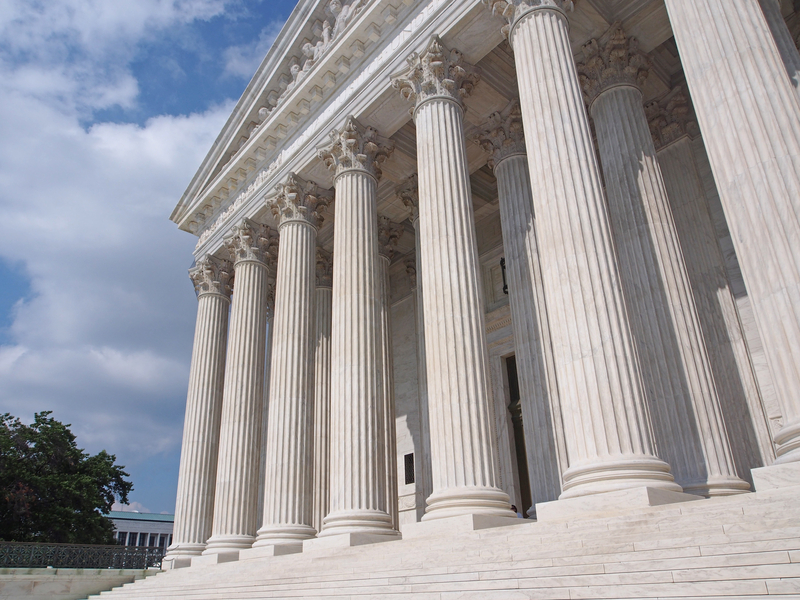 Taxpayers tend to face a difficult road when litigating tax disputes. We recently wrote about that here. It can be even more challenging, and costly, for taxpayers when they have to deal with more than one taxing authority on the same issue. For example, a federal income tax audit that increases a federal tax liability may very likely trigger a corresponding increase in state income tax. Indeed, in New York, like in most states, taxpayers have an affirmative obligation to report a “federal change” to the Department of Taxation. If the Internal Revenue Service (IRS) uncovers additional revenue, New York wants to ensure that it gets its piece of the pie, too. Yet, one New York taxpayer just took this issue – the obligation to report a federal change – to court and won. And he did so in a case involving a tax shelter!
Taxpayers tend to face a difficult road when litigating tax disputes. We recently wrote about that here. It can be even more challenging, and costly, for taxpayers when they have to deal with more than one taxing authority on the same issue. For example, a federal income tax audit that increases a federal tax liability may very likely trigger a corresponding increase in state income tax. Indeed, in New York, like in most states, taxpayers have an affirmative obligation to report a “federal change” to the Department of Taxation. If the Internal Revenue Service (IRS) uncovers additional revenue, New York wants to ensure that it gets its piece of the pie, too. Yet, one New York taxpayer just took this issue – the obligation to report a federal change – to court and won. And he did so in a case involving a tax shelter!
In February, the New York Times published an 8,000-word investigation into wealthy foreigners buying New York City real estate and taking advantage of U.S. laws that allow them to set up shell companies in order to obscure their true identities. The article, entitled “Towers of Secrecy,” points to Russian mobsters, corrupt Colombian politicians, and polluting Indian mining magnates. This type of publicity doesn’t mean that every person who uses an LLC to purchase or sell a New York City apartment is an apparent Bond villain. But the Times piece does underscore a recent enhanced focus on LLCs’ role in New York City real estate, and anyone considering using an LLC to transfer property in the city should take special note of a recent change to the city’s recording procedures.
Questioning the constitutionality of state personal income tax provisions seems to be all the rage these days. On the heels of the Supreme Court’s decision in Comptroller v. Wynne discussed in our recent blog post, New York’s highest court heard oral arguments on Thursday, June 4, for two related cases to determine whether the taxation of nonresident shareholders of S corporations is constitutional.
 One of the more interesting aspects I’ve seen in residency cases in my practice is the importance and understanding of a taxpayer’s intent in the overall analysis. That’s part of what makes residency cases so unique. There are likely very few situations in federal or state tax law where what is kicking around in somebody’s mind is critical to the determination of the tax issue. But the domicile test—which looks to discover where a taxpayer has his permanent or primary home—turns on the notion that the taxpayer’s intent can be a deciding factor. This can make the audit process really difficult. How do you prove to an auditor what your client was thinking? You can point to objective facts; you can point to case law; but how do you get into someone’s head? And more importantly, how do you convince an auditor to do the same?
One of the more interesting aspects I’ve seen in residency cases in my practice is the importance and understanding of a taxpayer’s intent in the overall analysis. That’s part of what makes residency cases so unique. There are likely very few situations in federal or state tax law where what is kicking around in somebody’s mind is critical to the determination of the tax issue. But the domicile test—which looks to discover where a taxpayer has his permanent or primary home—turns on the notion that the taxpayer’s intent can be a deciding factor. This can make the audit process really difficult. How do you prove to an auditor what your client was thinking? You can point to objective facts; you can point to case law; but how do you get into someone’s head? And more importantly, how do you convince an auditor to do the same?
New York’s driver’s license suspension program, used to encourage and enforce delinquent tax collection, is still in its infancy. Two of my colleagues wrote an informative piece about the mechanics of the program, which began in 2013, and they also detailed appeals strategies in the event a taxpayer receives a suspension notice from the New York Tax Department that wasn’t warranted.
 On May 18, 2015, the U.S. Supreme Court declared Maryland's resident tax credit structure unconstitutional because it subjected income earned outside the state to potential double taxation. The Supreme Court concluded in a 5 to 4 decision in Comptroller of the Treasury of Maryland v. Wynne that this structure impermissibly favored income earned within Maryland over income earned outside the state. According to the court, this effectively created a tariff that violated the dormant Commerce Clause of the U.S. Constitution.
On May 18, 2015, the U.S. Supreme Court declared Maryland's resident tax credit structure unconstitutional because it subjected income earned outside the state to potential double taxation. The Supreme Court concluded in a 5 to 4 decision in Comptroller of the Treasury of Maryland v. Wynne that this structure impermissibly favored income earned within Maryland over income earned outside the state. According to the court, this effectively created a tariff that violated the dormant Commerce Clause of the U.S. Constitution.
Here's a quick review of the facts of the case. Brian and Karen Wynne are Maryland residents. Like most states, Maryland taxes residents on their worldwide income regardless of its source. In other words, Maryland residents can pay tax on income earned outside Maryland. In 2006, Brian Wynne owned stock in a Subchapter S corporation that operated and earned income in other states. In fact, the S corporation filed income tax returns in 39 states. The Wynnes reported the income that flowed through to them from the S corporation on their Maryland income tax returns but also claimed an income tax credit for taxes paid to other states. Almost every state tax code contains a similar credit. These credits are designed to avoid double taxation and to allow for the proper allocation of the tax burden to the jurisdiction where the income was earned.
The problem in the case arose because Maryland imposed two taxes, a state tax and a county tax. Despite imposing two taxes, the Maryland credit for taxes paid to other states only applied to the state tax, not the county tax. Thus, the Wynnes ended up being double taxed on the S corporation income. They paid tax to the states where the income was earned, and they paid the Maryland county tax on the same income. According to the Supreme Court, this scheme violated the dormant Commerce Clause of U.S. Constitution.
This case is notable for several reasons:
 In a few short years, marijuana has gone from being widely regarded as an illicit drug to being legalized for medical purposes in 23 states and for recreational purposes in four states – with others expected to follow suit in short order. New York State jumped on the bandwagon last year with the enactment of the Compassionate Care Act (the Act), a highly-regulated medical marijuana program. In fact, the Department of Health is currently accepting applications from would-be “registered organizations” (ROs) aspiring to be among the five ROs to receive the department’s blessing to cultivate and dispense medical marijuana from up to four locations around the state.
In a few short years, marijuana has gone from being widely regarded as an illicit drug to being legalized for medical purposes in 23 states and for recreational purposes in four states – with others expected to follow suit in short order. New York State jumped on the bandwagon last year with the enactment of the Compassionate Care Act (the Act), a highly-regulated medical marijuana program. In fact, the Department of Health is currently accepting applications from would-be “registered organizations” (ROs) aspiring to be among the five ROs to receive the department’s blessing to cultivate and dispense medical marijuana from up to four locations around the state.
So why would sophisticated tax bloggers like us care? As tax nerds, we see tax issues everywhere! Indeed, the potential for states to grow tax revenue from marijuana sales has been a selling point on much of the state-level marijuana legislation from the outset. The potential is great: Colorado collected over $50 million in tax revenues and related fees in its first year. New York State, never one to forego a new tax, adds a new Article 20-B to the Tax Law under the Compassionate Care Act. Article 20-B imposes a 7% excise tax on every sale of medical marijuana by an RO to a “certified patient” or “designated caregiver” – both defined terms under the Act. That’s a pretty high tax rate…
 It seems I can’t get through a work day lately without some tax alert, webinar invite, article, or tweet addressing the new IRS tangible property regulations. These new rules have caused quite the uproar in the tax community, as outlined by articles here, here, and here. These regulations are aimed at questions as to whether expenditures on tangible property are currently deductible, or whether they must be capitalized and recovered through depreciation over time. And the principal question that the final regulations address is whether expenditures relating to the maintenance and alteration of tangible property, including buildings and other fixed assets, are properly treated as repairs, which are currently deductible, or are required to be capitalized as an improvement to the property. That distinction—between deductible repairs and capital improvements—has been mostly developed through judicial decisions, based on facts and circumstances. But in 2003, the IRS issued Notice 2004-6 , announcing that it intended to propose regulations in this area. And with the expediency and speed we have come to expect from our government, final regulations were issued in September 2014, and more recently the IRS announced simplified procedures offering relied to certain small businesses.
It seems I can’t get through a work day lately without some tax alert, webinar invite, article, or tweet addressing the new IRS tangible property regulations. These new rules have caused quite the uproar in the tax community, as outlined by articles here, here, and here. These regulations are aimed at questions as to whether expenditures on tangible property are currently deductible, or whether they must be capitalized and recovered through depreciation over time. And the principal question that the final regulations address is whether expenditures relating to the maintenance and alteration of tangible property, including buildings and other fixed assets, are properly treated as repairs, which are currently deductible, or are required to be capitalized as an improvement to the property. That distinction—between deductible repairs and capital improvements—has been mostly developed through judicial decisions, based on facts and circumstances. But in 2003, the IRS issued Notice 2004-6 , announcing that it intended to propose regulations in this area. And with the expediency and speed we have come to expect from our government, final regulations were issued in September 2014, and more recently the IRS announced simplified procedures offering relied to certain small businesses.
 One of the more interesting state tax issues we get to deal with as state and local tax practitioners involve questions in the sales tax area. One of the reasons is because the answer to every sales tax question is the same: “it depends.” State sales tax statutes have so many ins and outs, exemptions and exclusions, ifs, ands, ors, and buts that there rarely is a clear answer. And even if there is a clear answer, it often depends on the application of a variety of different facts and circumstances. This usually results in articles every year about the different tax consequences that can arise in silly circumstances, such as the taxability of bagels depending on whether or not they are sliced or not; candy bars being taxable based on whether or not they are in the candy or cookie aisle, etc.
One of the more interesting state tax issues we get to deal with as state and local tax practitioners involve questions in the sales tax area. One of the reasons is because the answer to every sales tax question is the same: “it depends.” State sales tax statutes have so many ins and outs, exemptions and exclusions, ifs, ands, ors, and buts that there rarely is a clear answer. And even if there is a clear answer, it often depends on the application of a variety of different facts and circumstances. This usually results in articles every year about the different tax consequences that can arise in silly circumstances, such as the taxability of bagels depending on whether or not they are sliced or not; candy bars being taxable based on whether or not they are in the candy or cookie aisle, etc.
But the other interesting aspect of sales tax is that it touches everybody: every business, every taxpayer, every industry. A couple of years ago, we started to learn this firsthand when a lot of my income tax clients in the Wall Street area started contacting me about sales tax issues. Sales tax on Wall Street? What can that be about?
As many of our clients and friends know, earlier this year Tim Noonan won the Gaied v. New York case in New York’s highest court.
